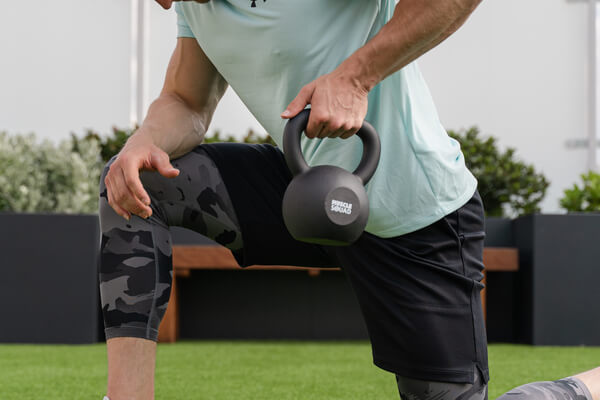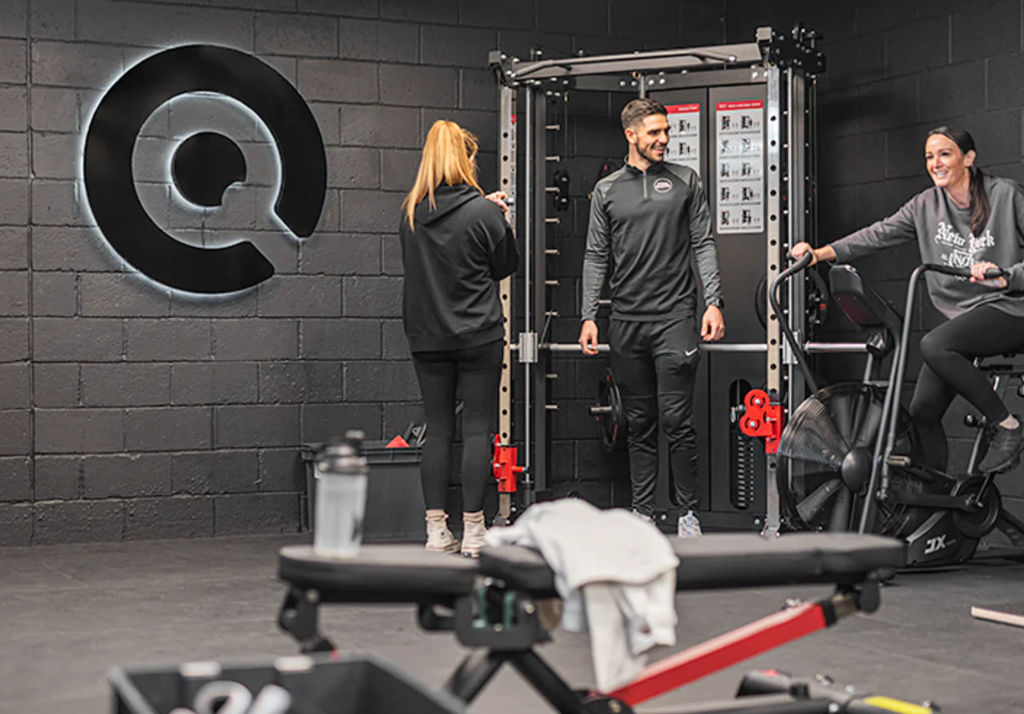In this 3-part series we’re looking at how to strengthen the often-overlooked areas of the body to help us prevent or rehabilitate injuries. Some of us spend a lot of time sat at desks during the day, and without adequate activity can cause some discomfort in certain muscles or joints. Follow along over the next couple of weeks for some tips on how to target these overlooked muscles and help bulletproof your body.
This week’s focus is on the Ankles. We asked CJ our Brand Manager & Trainer to give us an insight into how he’s been rehabilitating his Achilles after it ruptured playing football 4.5 months ago.
In a nutshell, the ankle is supported by lots of small muscles and tendons in and around the foot and heel and is controlled by the more commonly known muscles in the calf (Gastrocnemius and Soleus) and Tibialis Anterior (the front of the shin) which work together to bend the ankle down (Plantar Flexion) and lift the ankle up (Dorsiflexion). All these muscles and tendons play a big part in how we move, walk, jump, run, and balance so it’s important to make sure they are considered somehow in your routine.
Farmers Carry
The Farmers Carry is a great exercise not only for your ankles stability, but also for your balance, co-ordination and core muscles. Adding load to your movements allows your body to have to adapt to the new stimulus, meaning all the smaller stability muscles need to fire to keep you moving efficiently. Your body now not only needs to stabilize its own weight but also now the dumbbells you’re holding. As you walk the weight shifts from one leg to another giving your ankles a stability challenge. “It’s been a great way to strengthen my ankles and get me used to walking properly again” says CJ. “Having not been able to walk for 3+ months all of my leg muscles need a wakeup call, so this has been a great move for me to implement, but whether it’s for rehab or prevention I’d highly recommend it!”
Intensifier: If you want to make it more challenging try walking on your tip toes!

Standing Calf Raises
Let’s be honest, calf raises aren’t the first exercise on everyone’s workout plan, but they are a great way to not only build up the calf muscle, but also strengthen the ankle and give it a bit of extra stability for things like running and jumping. Standing calf raises place most of the emphasis on the Gastrocnemius which is the meaty higher part of the calf that most people see. You can do these with weight or without, on a machine or free weight, using dumbbells or a bar, however you like. “Calf raises were and still are one of the main movements the physio’s have me doing” says CJ. “A month ago, I couldn’t even do one with just my bodyweight, but I’m now trying to work up to do a single leg calf raise with my recovering injured leg.” Adding at least one calf exercise into your weekly routine is very important if you want to have healthy ankles.
Intensifier: If you want to make it harder do them from a deficit or on a step/weight plate, to give yourself more of a stretch at the bottom! (Only do this if you’re able to pain free).

Dumbbell Marches
The Dumbbell march is a great core movement as it creates an instability challenge for the body, but it is also great for loading the ankles without any crazy level of movement. Some people find standing on one leg is a challenge as it is, so adding weight to that whilst switching from your left to right leg gives the ankle the job of providing balance to the body. It’s also a great way to see which leg seems more stable and which leg you may need a little work on. “When I first did this movement, I could really see how my balance had deteriorated in the months of my leg being in a cast” said CJ “and that was with no weight at all…yikes! But over the weeks I’ve added more weight to the movement and my body has begun to adapt to the challenge well. Being on crutches, being temporarily unable to walk or having a limp can create imbalances in the hips, knees, and ankles, so this for me has really helped me identify where I’ve needed to work on.”
Intensifier: Similarly, to the Farmers walk, to make this more challenging try going on your tip toes, you’ll really feel those calves burn!

Seated Calf Raises
Yep, another calf raise movement… But this movement focuses more on the Soleus, which is the lower part of the calf (that attaches to the Achilles). You may have seen the seated calf raise machine at the gym, but in the home gym environment you can simply place a dumbbell, kettlebell, or weight plates on your knee/knees to perform the movement. “This is a movement I prefer to do single leg” says CJ. “With my Achilles snapping in two, this area was the most effected as the Achilles tendon attaches to the Soleus, so it’s vital that this area is strengthened and not overlooked”.
Intensifier: Again similarly to the standing calf raise, to make it harder do them from a deficit or on a weight plate, to give yourself more of a stretch at the bottom portion of the movement (but again, only do this if you’re able to pain free).

Try adding these 4 movements into your routine to help you add strength, stability, balance and co-ordination to the ankles and help prevent or rehabilitate any lower limb injuries you may have too.
Check out our video demonstrating all 4 movement patterns:

 Aug 09, 2023 - Stephanie Underwood
Aug 09, 2023 - Stephanie Underwood


Leave a comment: